Every chess player should have a defensive strategy for Black in reply to some of white’s brutal attacks in the opening. Below, you’ll discover 13 of the best chess openings for black that are an excellent defensive mechanism. Whether you are new to chess or an expert, the most important thing to understand is the crucial balance between offensive and defensive strategies.
Here are the 13 best chess openings for Black
- Caro-Kann Defense
- Sicilian Defense
- French Defense
- Pirc
- Dutch Defense
- Alekhine
- Benoni
- Slav Defense
- Grunfeld Defense
- King’s Indian Defense
- Benko Gambit
- Budapest
- Calabrese Counter Gambit
1. Caro Kann Defense
The mainline of the Caro Kann Defense begins with:
1.e4 c6 2.d4 d5
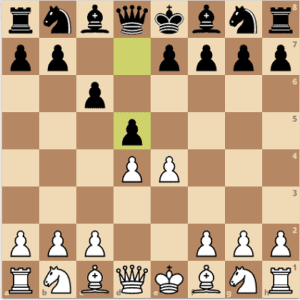
This is one of the most popular defensive openings, in response to the King Pawn 1.e4 opening strategy. Black can then respond with 1.c6 with a plan to thrust forward with d5 in the next move, and to attack the white central pawn on e4.
This is one of the very few strategies that will put black in equal competition in the main line. You could consider black as being in a better position, specifically at the end of the game, when the main line is played.
This happens because black doesn’t have to compromise its pawn structure through this move and will have a considerably easy end game. There are numerous Caro Kann Defense variations, but the main line carries on with 2.d4 d5 3.Nc3 dxe4 4.Nxe4 Bf5.
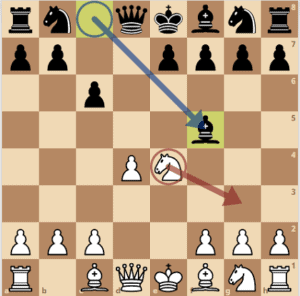
This is a crucial setup, which you must understand if you want to use Caro Kann. In various situations, opening with this strategy can gradually change to the French Defense. However, when playing the main line, black will typically have a pawn on c6. Afterwards, the light-squared bishop will be brought out by black and will make a move to e6.
When black’s pawn is on c6, the next move would be to bring the knight to d7, while supporting the future knight on f6. The black queen can be placed on c7, while the dark-squared bishop has various lines, and isn’t blocked by pawns.
Instructive Game: Anand, Viswanathan – Carlsen, Magnus, 1/2-1/2, World Championship, 2013
[NB: From mobile, click the bottom right icon to view the full game]
2. Sicilian Defense
Let’s see Sicilian Defense basics. When most people see this opening, they are startled, because it is one of chess’ biggest openings. There are probably more than ten variations that can be played in the Sicilian Defense.
No matter how many times you play this strategy, you will always learn something new. Here, we will look at the raw basics of this defense strategy. Usually, white will begin by moving its pawn to e4 and taking control over center squares. Instead of moving the black pawn to e5, the pawn on c7 will move to c5, which is a counter center.
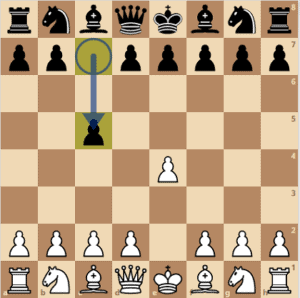
White then proceeds with its knight on f3. At this point, there are so many other variations that you could play, but the most typical one is to move the pawn from d7 to d6. This creates a “small pawn chain” and opens the way for the bishop’s advance. The white pawn then moves from d2 to d4. This is a must capture for the black pawn and then the white captures the black pawn in return. With this move, you will see that white has a greater advantage, because the knight is out in the center, and the pawn as well.

Now, the main aim of the black player is to try and stop the white player from removing its pawn from c2 to c4, which would create a “Maroczy Bind.” The Maroczy Bind allows an opponent to take greater control over the center and increase their chance of winning. To stop that from happening, black will move the knight from g8 to f6.
This makes it easier to attack the pawn on e4, and stop the white player from making the Maroczy move. A typical move that the white will make is to move its knight from b1 to c3.
Now, to stop an attack on the b5 square, which aims directly at the black’s king, it is extremely important that the black player moves its pawn from a7 to a6 to stop the attack on the b5 square.
This move stops the white player’s knight from going to the b5 square. Additionally, it will also stop the white bishop on f1 from moving to b5. It will be forced to move to c4, or somewhere in the back. From this point, the game can move in any other direction.
Instructive Game: Carlsen, M. – Vachier Lagrave, M., 0-1, 11th London Classic 2019
Our recommended book for the Sicilian: The Sicilian Sveshnikov by Mikhail Krasenkov
3. French Defense
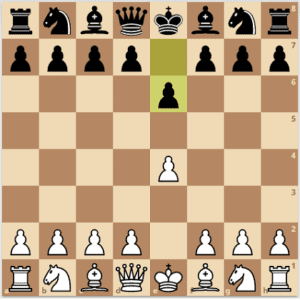
This move is a counterattack against the first white move 1.e4. For the first black move, white expects black to move diagonally, a2-g8, which is the biggest weakness of black and allows the opponent to take control of center squares after 2.d5. Even some of the most experienced chess players find it difficult to play against the French Defense since it is a unique and unexpected defense.
The greatest problem black will encounter is the blocked bishop on the queenside (which was blocked by the first 1.e6 move). Typically, the entire game revolves around this major flaw. It is essential to understand your weaknesses if you want to win a chess game.
A major French Defense element is that black typically counterattacks on the queen’s side, whilst white usually focuses on the king’s side. The French Defense is ranked second in popularity to the Sicilian (against white’s 1.e4 move). Since the majority of games start with 1.e4, this strategy is an ideal tool to liven up your chess game and throw your opponent off track.
Illustrative Game: Caruana, F. – So, W., 0-1, PRO League KO Stage 2017
Our recommended book for the French Defense: The French Winawer: Move by Move – Giddins
4. Pirc
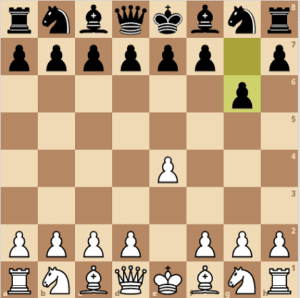
This strategy is a hypermodern defense, which means that it doesn’t make an attempt to control the game with pawns early on. In fact, black attacks the center with minor pieces from the sides. When the foundation has been set, it starts undermining white’s center control.
There are only two major attacks that white can play against the Pirc Defense. The first move is the Austrian Attack which is one of the most aggressive moves in chess, in which white moves its f pawn towards f4. This step exposes the white king but puts extra pressure on the black kingside. A great idea is to attack the king aggressively, which is castled on the fianchettoed bishop’s side. This is what black does in the Pirc Defense through the g6 move followed by Bg7.
The second attack of white is the Classical System, in which the second knight moves to f3 and positions itself to create a stronger center control before white prepares to attack. In both attacks, black has strong counter plays but must be cautious about playing too passively.
If black isn’t careful, it can find itself in a dangerous position in which it is too cramped to move forward. The best thing for black to do is to attack the center for white before the opponent has any chance of attacking.
Recommended book: Starting out the Pirc
5. Dutch
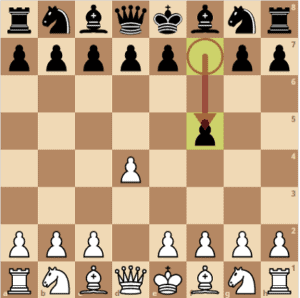
This strategy is a fairly active defense, especially against 1.d4. With the Dutch Defense, black aims to control the e4 square whilst entirely unbalancing the position. Further down the road, black will strengthen the attack on the white’s kingside.
The main strategic element is that black’s usual weak square (f7) becomes an even greater target. White will usually focus entirely on targeting that weakness. As a response, black will have some active pieces that aren’t cramped and will offer an exciting attack against white.
White typically fianchetto the bishop of the king towards g2 aiming to place some support on the e4 square which is being attacked by black. Black would probably fianchetto its bishop as well for adding pressure towards the dark squares. Since both black and white have various strategies, the majority of the game is quite active and lively with the Dutch Defense. If you are one of those players who often encounter 1.d4 and dislike playing the Queen Gambit, this defense strategy gives you plenty of counterattacking options and is a rather good alternative.
6. Alekhine Defense
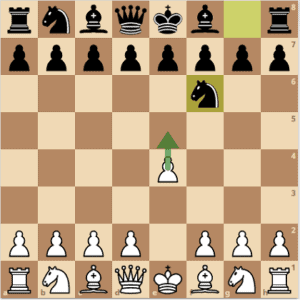
This strategy is another hypermodern defense against the most used white e4 opening. Black allows White to start chasing its knight throughout the board by tempo gaining pawn moves which will assist white in gaining center control of the board.
In the meantime, black will undermine white’s overextended pawns. The one thing black must remember is that once your knight is being chased around the board, black doesn’t have the option of playing passively. It is essential that black attack white’s center control, or else white will earn a devastating victory.
White typically has three main lines to select from. However, it usually begins with 1.e4 Nf6 2.e5 Nd5 3.d4 d6. This is where things begin to change based on the selected variant. White has the option to choose from an aggressive line of four pawn attacks, in which white would aim to place its four central pawns near the center.
White may also play exchange variations that follow the pawn attack. However, the last pawn it would opt to exchange would be the d6 pawn. Black has the option of playing a sharp line to capture with its king pawn. It may also choose an uber- aggressive and exciting strategy, capturing with its c pawn.
Recommended course for the Alekhine Defense: The ABC of the Alekhine by Andrew Martin
7. Benoni Defense

This strategy is an extremely aggressive one that can be played by black in response to white’s common d4 opening. Whilst numerous defense strategies aim to earn draws and close up against the pawn queen opening, the Benoni Defense provides black with numerous opportunities to not only equalize the game but also gain an advantage to start playing for the win.
With the modern Benoni Defense, the major focus is white’s center control of light squares, with the key pawns placed on d5, and black’s center control of dark squares. Black would aim to fianchetto its king-side bishop towards g7, to add support on the dark squares.
As a white player, you want to maintain constant pressure on the d5 square, using it to set up outposts for minor pieces and to put more pressure on black. As a black player, you would want to prevent white from putting pressure on you and preventing them from gaining outposts on the c6 and e6 squares.
The Benoni Defense strategy typically opens up after the opening move. This indicates that bishops have more power compared with knights. This is why it is imperative to be cautious when it comes to trading bishops. Black would get many counter plays and would be able to play a great game, once things start opening up in the middle of the game.
8. The Slav Defense
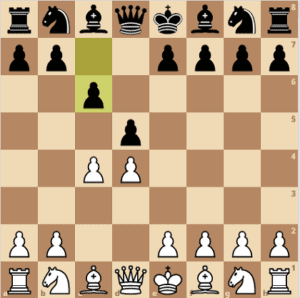
This strategy is one of the most used opening defenses with GMs. This is primarily driven by two major factors. Firstly, it is the most solid line to play against the Queen’s Gambit. Since the Queen’s Gambit is the most popular opening at higher playing levels, the majority of expert players are fans of the Slav Defense.
This defense strategy also provides opportunities for multiple variations. This means that players, who prefer to be creative and dislike playing similar variations in every game, will rather enjoy using the Slav Defense.
Black seeks to defend its pawn on d5 with its c6 pawn in the second move. This is because the pawn on the e file stays as required, and doesn’t block the light-squared bishop. In the Slav Defense’s main line, white aims to dominate the center of the board, and black aims to control the b4 square, making a push towards the e5 and c5 squares.
9. The Grunfeld Defense
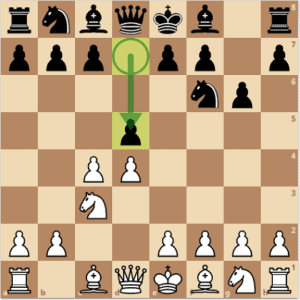
This strategy is another hypermodern defense. This means that black doesn’t try to initially control the center with its pawns. Instead, it focuses on attacking the center from the sides, utilizing minor pieces. Once the foundation has been built, it starts undermining the white’s center control.
There are three major lines in this defense strategy. The main line is exchange variations, and it is what the majority of players aim for when they approach the Grunfeld Defense. Black allows White to entirely dominate the center with its pawns, focusing its own energy on the d4 square.
Instead of utilizing its special advantage in the center, white has to react to this threat by focusing its energy on defending its d4 pawn. With all white’s pieces and pawns in the center, and no other strategy to rely on, things take a nasty turn for white if it starts losing focus.
For white players who dislike defending and prefer to attack more, the Russian variation prompts them to give up their strong pawn center and get the queen involved, to pressure black. Since white’s d4 opening has gained popularity from the GMs each year, it isn’t surprising that the Grunfeld Defense strategy is regularly utilized in the game. It becomes quite deadly when capably used and can successfully halt even an experienced d4 player.
10. The King’s Indian Defense
This strategy is one of the strongest defensive chess strategies. Black creates a solid defense around its king and aims to counter-attack, depending on where white is the weakest. Play in the King’s Indian Defense starts with:
- d4 Nf6
- c4 g6
- Nc3 Bg7
- e4 d6.
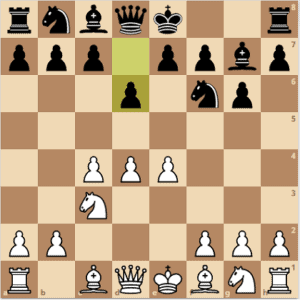
This strategy is a hypermodern concept that offers center control to the white without attempting to control the game early on with pawns. Instead, black aims to develop its minor pieces early on, and then move its pawns to the center further on in the game.
Even though this defense is a strong opening for black, it’s also rather passive in the initial stages. If you are an aggressive player, this move won’t be enjoyable for you. Similar to other opening chess strategies, this strategy will provide numerous opportunities for counterplay in the middle of the game.
Recommended course: The King’s Indian by Victor Bologan
11. The Benko Gambit

The Benko Gambit is a great chess opening for black! This offensive strategy is a well-respected and popular chess gambit. This is the reason why it is the main line stemming from Benoni Defense. White has an option to either decline or accepts this gambit by using Nf3. A few players prefer declining the gambit if they aren’t familiar with it.
However, you almost always witness white’s acceptance with cxb5. Black’s entire goal is to give up a pawn early to gain a larger advantage on the queenside. Black continues trying to give up one more pawn with a6. Numerous black players have no problems giving up their pawn due to the ideal attacking lines which result from the queenside of the attack.
In the Benko Gambit, if you are playing as a white player and want to avoid getting into the main line, defending your queenside throughout the game, then it is typical to give up a pawn and start focusing on center control. Remember this opening isn’t for faint-hearted players. It is an extremely aggressive opening and must be played accordingly.
12. The Budapest Gambit

This offensive strategy is the least popular gambit. Yet, it is a rather interesting play for black. For instance, in the main line, white may fall into a trap easily leading to an early checkmate.
Black, in its second move, aims to give up its pawn on e5 and begins developing its pieces to add pressure on the e5 pawn. Due to this, white won’t be able to hold on to its extra pawn. Therefore, it will have to give up its pawn many times and continue to develop pieces without worrying about achieving a pawn advantage.
In the majority of gambits, the side giving up pieces usually dictates how the game continues. However, in the Budapest Gambit, a white player determines how the game will continue. On the main line, white determines whether it wants to acquire double pawns by staying up in material or acquire a double bishop pair by giving back the pawn. This doesn’t mean that the game isn’t playable for black, but utilizing this move gives white better options (compared with other gambits).
13. The Calabrese Counter Gambit

White uses the Italian strategy in hopes of quickly developing its light-squared bishop and dominating the center. Black uses the Calabrese Counter Gambit strategy to give up its f pawn to thwart white’s entire game plan. The more aggressive attempts or moves white makes in the opening, the more traps it may potentially fall into. Black typically ends up with powerful center control, whilst white pieces struggle to locate good squares to develop on.
The white player has to be very careful and precise or it can get into trouble. If you play black and want a powerful attack, then the Calabrese Counter Gambit is the right strategy for you.
Offensive and Defensive Opening Strategies
Most inexperienced players are quick to go on the offensive to quickly crush their opponent. Although pulling this off can be rather impressive, the probability of such a quick offensive win (particularly against experienced players) is highly unlikely. The main flaw with an all-out offensive is that any experienced player can easily see the gaping holes in your defense. Expert players simply sit back and wait for their opponents to make a mistake.
Think of chess as a war, in which you have to defend your king, and simultaneously, make attempts to take your opponent’s capital. An army that bravely charges onto the battlefield with no defensive protection tends to quickly experience a crushing defeat. This is the reason why it is essential to start a game with a balanced approach.
It is essential to have both offensive and defensive strategies up your sleeve if you want to win. There are times when the best offensive move is to simply wait for your opponent to start an offensive attack and simply recognize the flaws in their approach. This will give you the added advantage of finding loopholes in their defense, rather than giving them an opportunity to find your own weaknesses. It is essential to work on both your defensive and offensive skills. Using these chess openings for black, you can be sure that your offensive game will be top-notch when playing against white!





